Not one, but two, professional luthiers have set down roots and found violin-making inspiration in the beauty of the Grey Highlands.
by Anya Shor // photography by Anya Shor

The little village of Flesherton embraces drivers coming up Highway 10 into a fold of historical buildings, cafés and a picture-perfect cheese shop at a four-corner intersection that signals one’s arrival at the regional destination of Grey Highlands.
Indeed, the community of just over 500 is the self-proclaimed “Gateway to the Beaver Valley.” If one were to park and stretch their legs with a short stroll along Collingwood Street, it would be difficult not to stop and admire a charming brick home perched above an old retaining wall and wonder what it would be like to live there.
Such was the case for David Prentice, “violin maker,” as the small, discreet sign on the main floor window now confirms. It was a brisk day in March of 1987 when Prentice packed up his tent and left the two-storey east-end Toronto apartment he shared with his wife, Susette, and drove through Flesherton on his way to a favourite camping spot near Kolapore. He stopped in at what was then a coffee shop and the romantic old house across the street caught his eye.
“I wandered over and went up the stairs and there was nobody living there at that time. And I went back to the city and said to Susette, ‘You know, if we ever move out of the city, I found the town and the building I would want to move to,’” recalls Prentice. “And she said, ‘Oh, OK, we’ll have to go and see it someday,’ and we got back to our lives.”
By late October, the home was theirs. The following June, they moved in and Prentice set up shop in a spacious room on the main floor facing the street and flooded in soft, natural light.
Mark Schnurr’s move to the area in 2008 was perhaps more a matter of course—and having a valued friend and colleague nearby sealed the deal. At the time, Schnurr and his family were living and working in the Guelph and Kitchener area—“quasi-country,” as he puts it. “We were looking to buy a country property, we didn’t really know what,” recalls Schnurr, “and then we found this property just outside of town where we just decided to build a house.” Prentice and Schnurr had travelled to a few conferences together and considered each other friends. “And that was, you know, a very nice selling feature,” says Schnurr, smiling warmly.
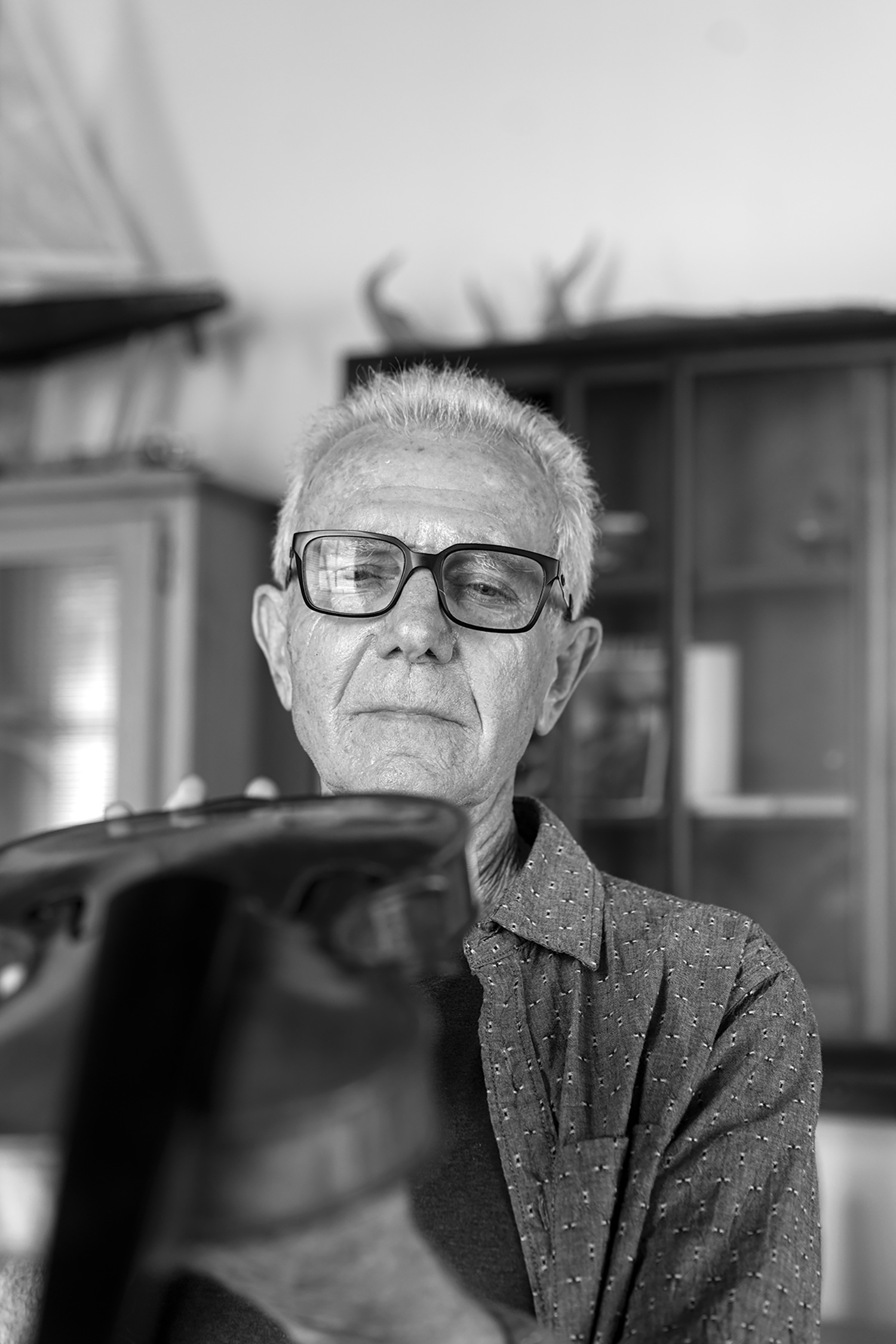
“What makes a great instrument? “It’s the character of sound,” says Prentice. “Its ability to carry in a large space, or the warmth. Some just love the warmth of the sound of a certain instrument.”
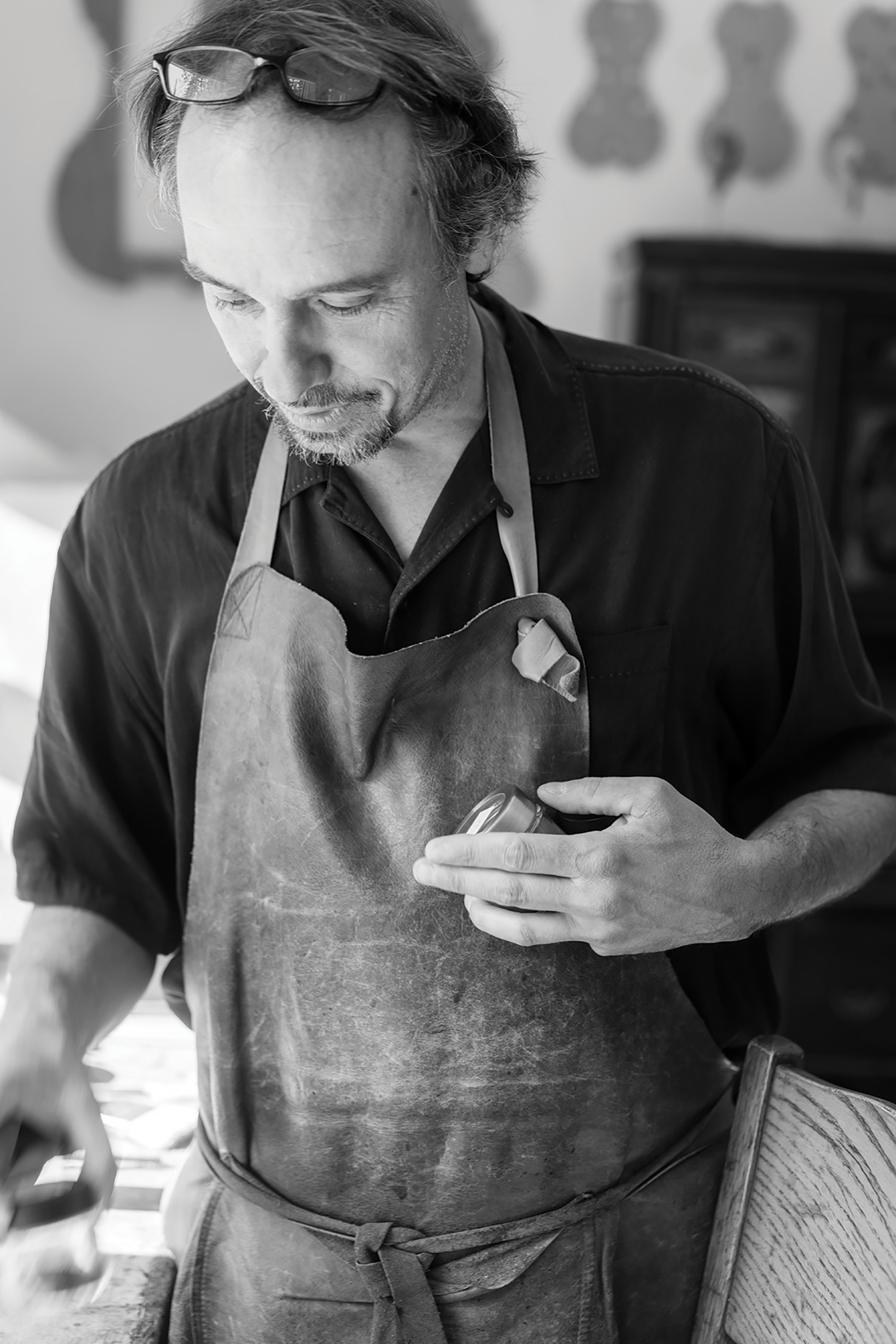
But now, how does one become a violin maker? Coincidentally, both Prentice and Schnurr had started off playing the mandolin, but neither had considered themselves musicians or planned to pursue a course of study as such. Schnurr was a visual arts student in high school but expressed a lifelong love for music as well—a symbiotic relationship between the two artforms shared by many notable artists. Schnurr affirms the link as he recalls his first foray into the world of musical instruments, “It was in high school art class I pursued the deconstruction and reconstruction of a guitar, like a Georges Braque painting, like a cubist painting. So, I essentially diced up a guitar and rearranged it as a cubist sculpture.
“Shortly after, I began playing the mandolin but I had no money,” continues Schnurr, “I was hitchhiking around the country and got a book on mandolin construction and proceeded to make a mandolin for myself. And then I met an old German violin maker in Waterloo and he gave me some insights into that world—rudimentary introductions into the compositional elements of violins and how they’re sculpted and how they work.” He stops for a moment and says, “And I never looked back. I became obsessed.”
Prentice considers himself a late starter, and was largely self-taught. He made his first instrument during a weekly night course at the Ontario College of Art & Design. “From then on, I relied on the kindness of other violin makers who answered my questions and kept me going on the path. And then a sale or two and some indication that gee, I can make a living doing this.” By the time he had settled in Flesherton, Prentice was ready to quit his day job and pursue violin making full time.
Prentice likens his approach to that of an alchemist. “I’m a sound maker,” he muses, portraying himself more as an artisan than a sculptor. “You’re taking the wood and these varnishes—and guts, you know, these natural-occurring substances—and turning it into a sound.”
“What I really wanted to make was sound, and I wanted the woodworking skills, and the knowledge of chemistry to make varnish,” says Prentice. “And all of that, it’s just a means to an end. It’s like transubstantiation.”
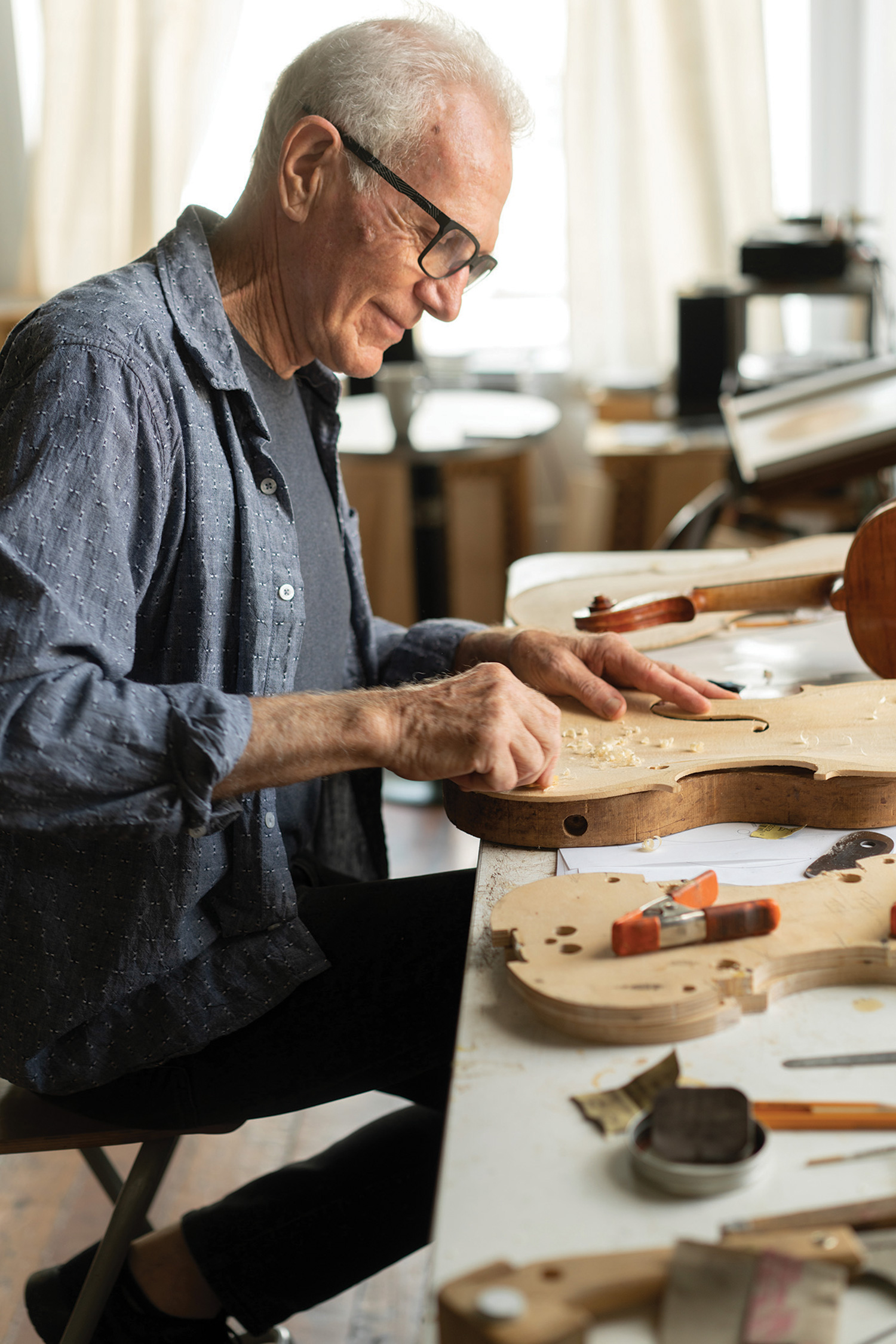
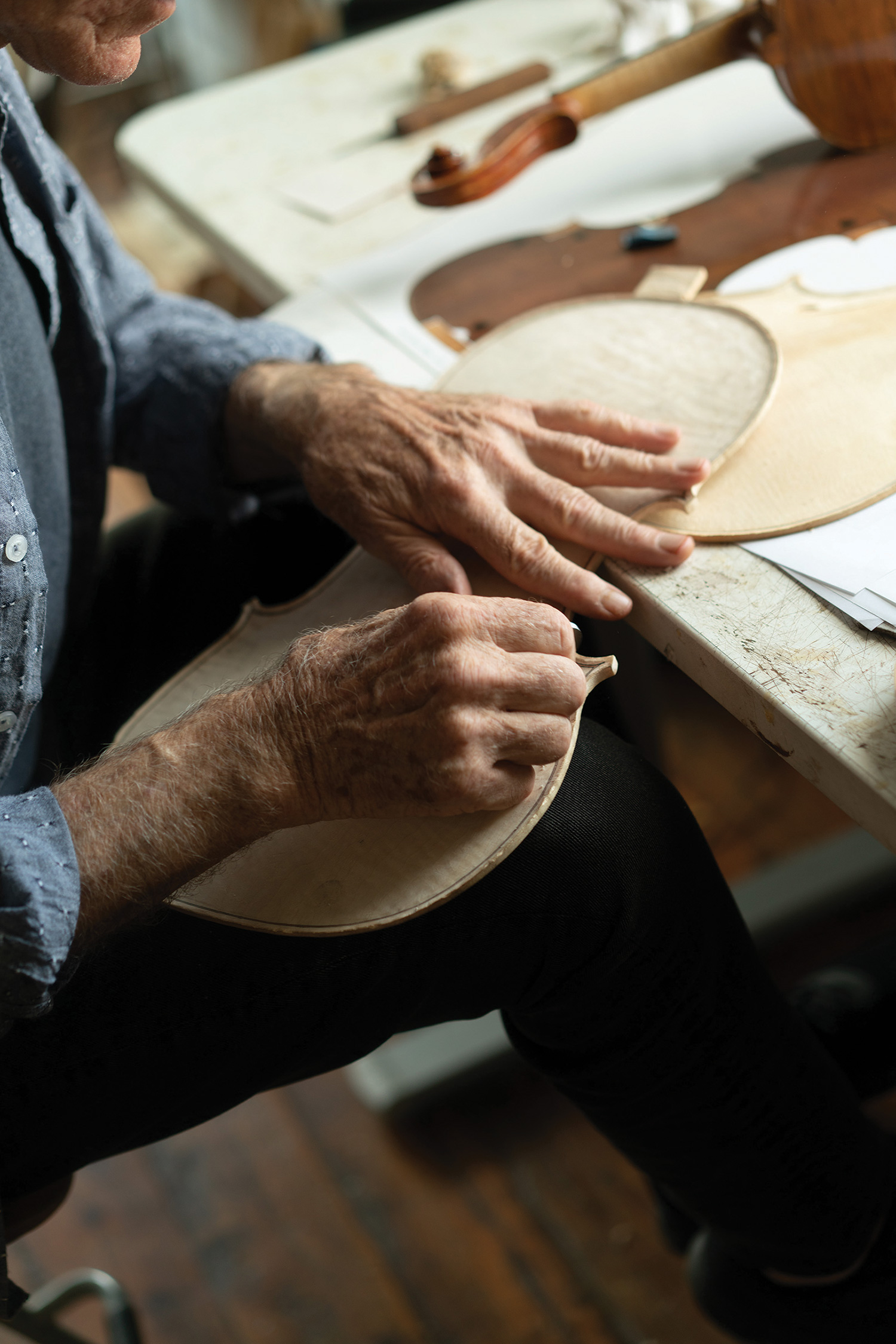
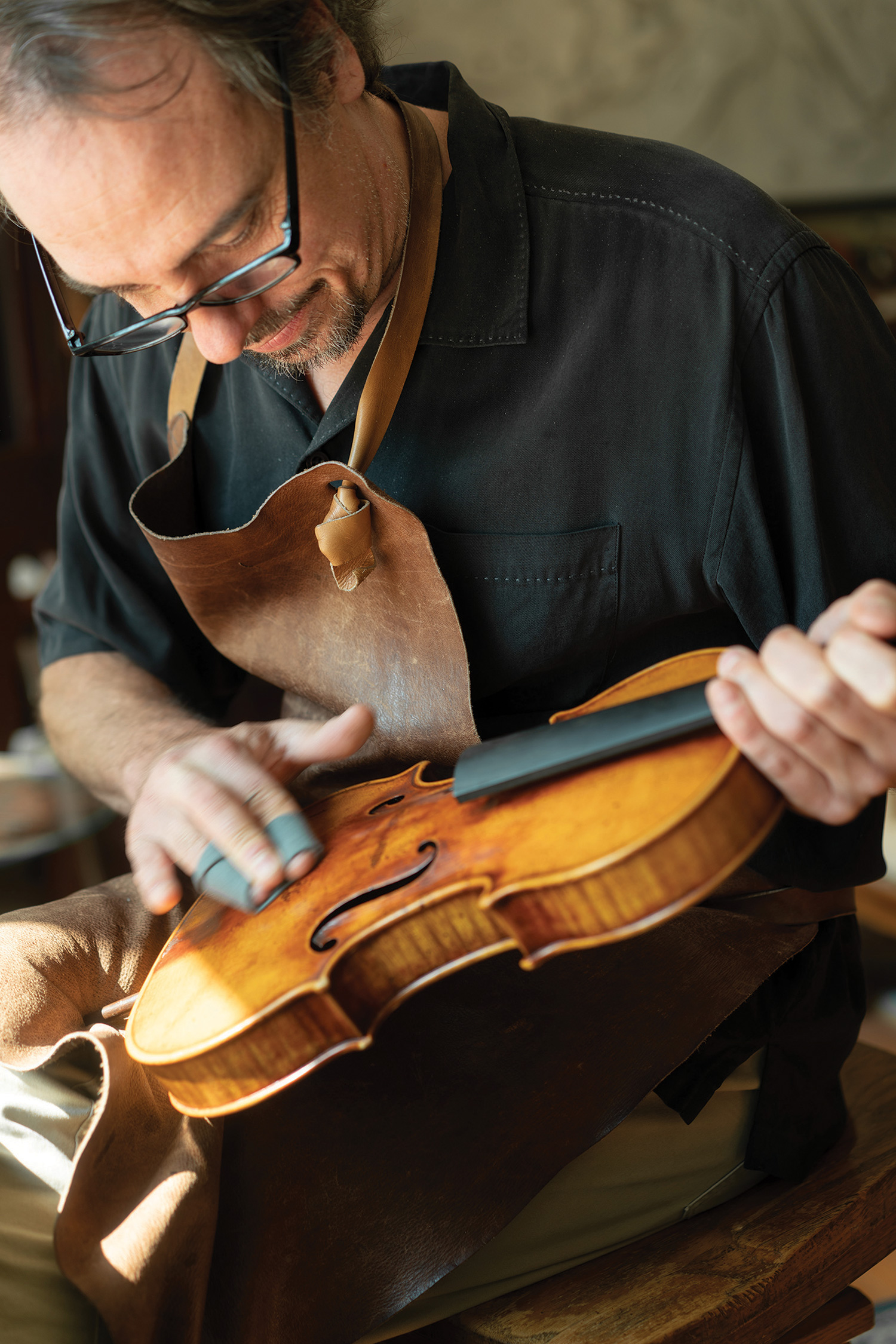
There is indeed a metaphysical quality that lingers in both Prentice’s and Schnurr’s musings on the subject of their craft—like a sustained note.
Schnurr describes the “guts” of the instruments and the nuances of sound: “It has a sound post in it, which is a little wooden dowel that sits just under and behind the bridge, between the front and the back, and it’s fitted with friction. It’s like an anima, in Italian or Latin, which means soul.”
And it has been said the violin is the instrument which most closely resembles the human voice and mimics human emotion. So it is natural that, though the violin maker creates the instrument, the player brings the anima, the soul, to life. The relationship between maker and player is therefore an intimate one. “I have a lot of clients who have become great friends,” says Schnurr. “I remember most of the violins I’ve made. So these things have special meaning.”
“I just love them as objects,” says Prentice, returning to the physical, “and there’s a magic about them.” He pauses to reflect and continues, “The instrument itself in any shape obviously has a lot of attraction for people. In my personal experience, whenever someone sees a violin, they just say ‘Oh, it’s so beautiful.’”
“The most beautiful instrument on the planet,” Schnurr concurs. “I mean sonically, aesthetically. There’s 500 years of history of beauty and essentially an unchanged design that has not had the need or necessity to evolve or change its construction, because it was designed perfectly from the beginning.
“And it’s also like the longest-running scientific experiment in human history,” he adds. “Scientists have been trying to investigate the violin and understand it for hundreds of years now.”
To that effect, Prentice adds, “Many of the violins that were made in the 16- and 1700s are spectacular instruments. I can’t imagine anything else that was made that long ago that people would still be using, but there are these violins that are still being used every day.”
Both violin makers work predominantly on commission, making instruments for professional violinists all across Canada and abroad. The process begins with a discussion about the nuances of sound and shape. “We usually have a dialogue and a lot of communication about total goals, aesthetics we’re going for—general adjectives like something brighter, darker, sizzly, growly, something that projects more, something that’s softer. We try to narrow it down,” explains Schnurr.
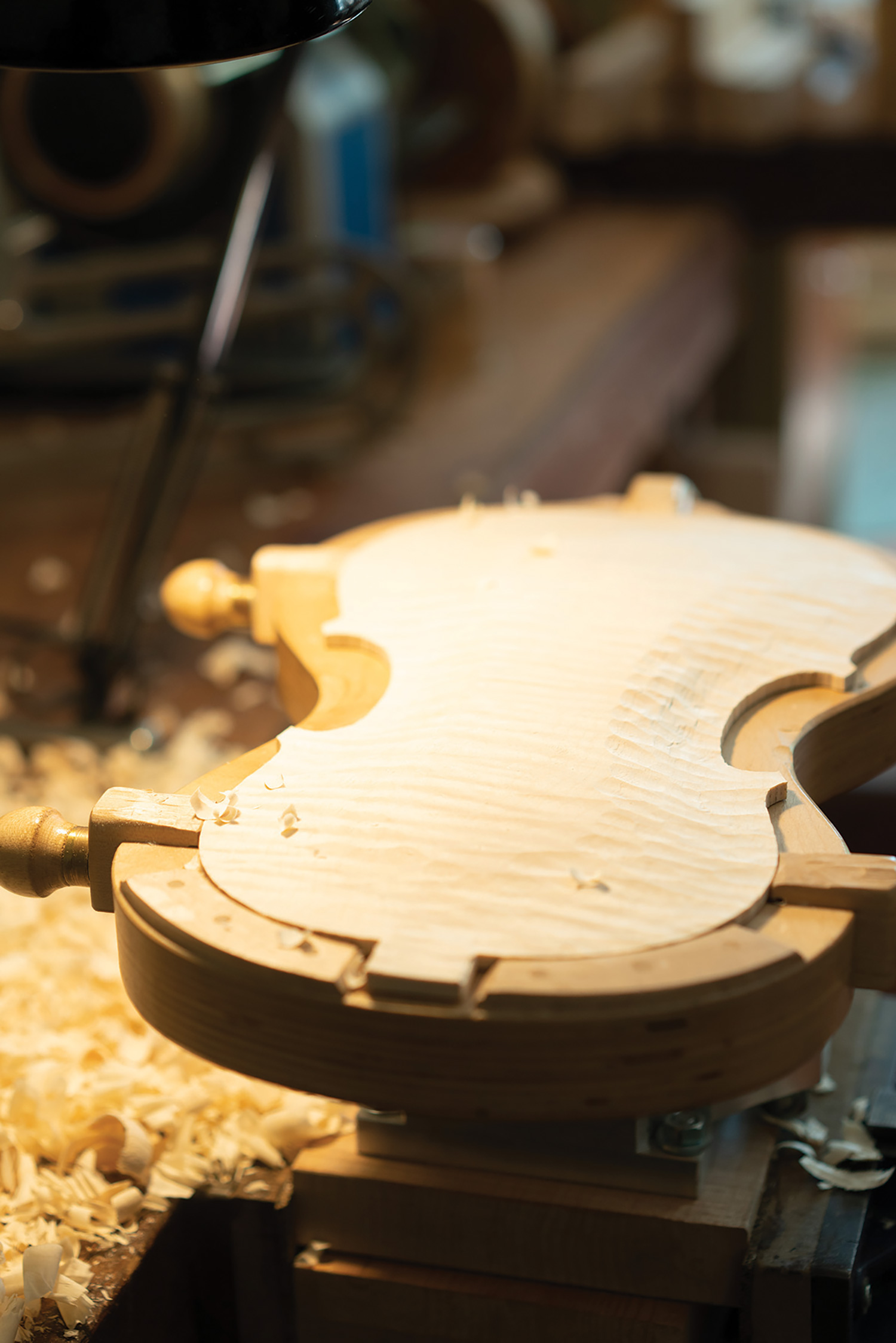
“There’s 500 years of history of beauty and essentially an unchanged design that has not had the need or necessity to evolve or change its construction, because it was designed perfectly from the beginning.”
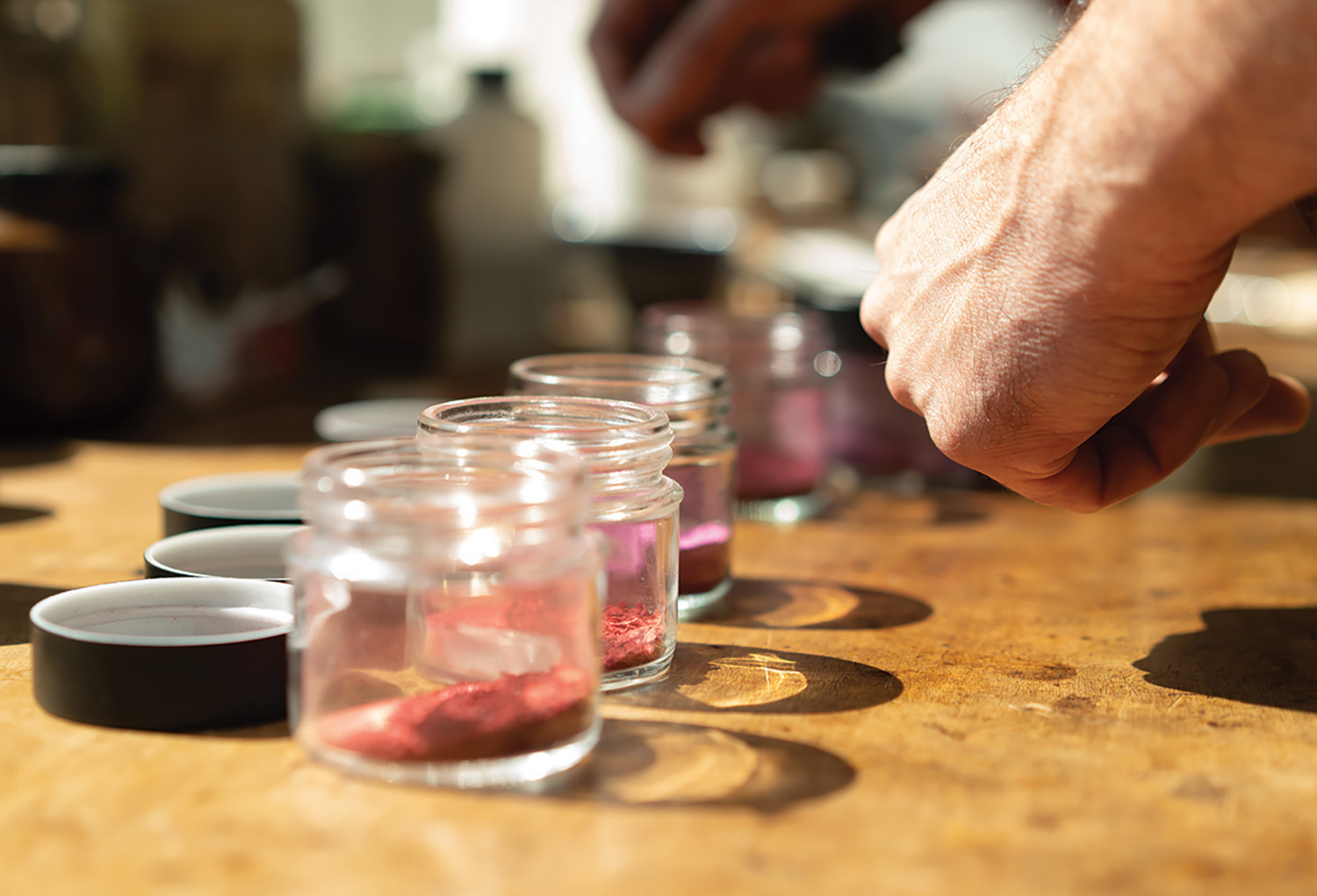
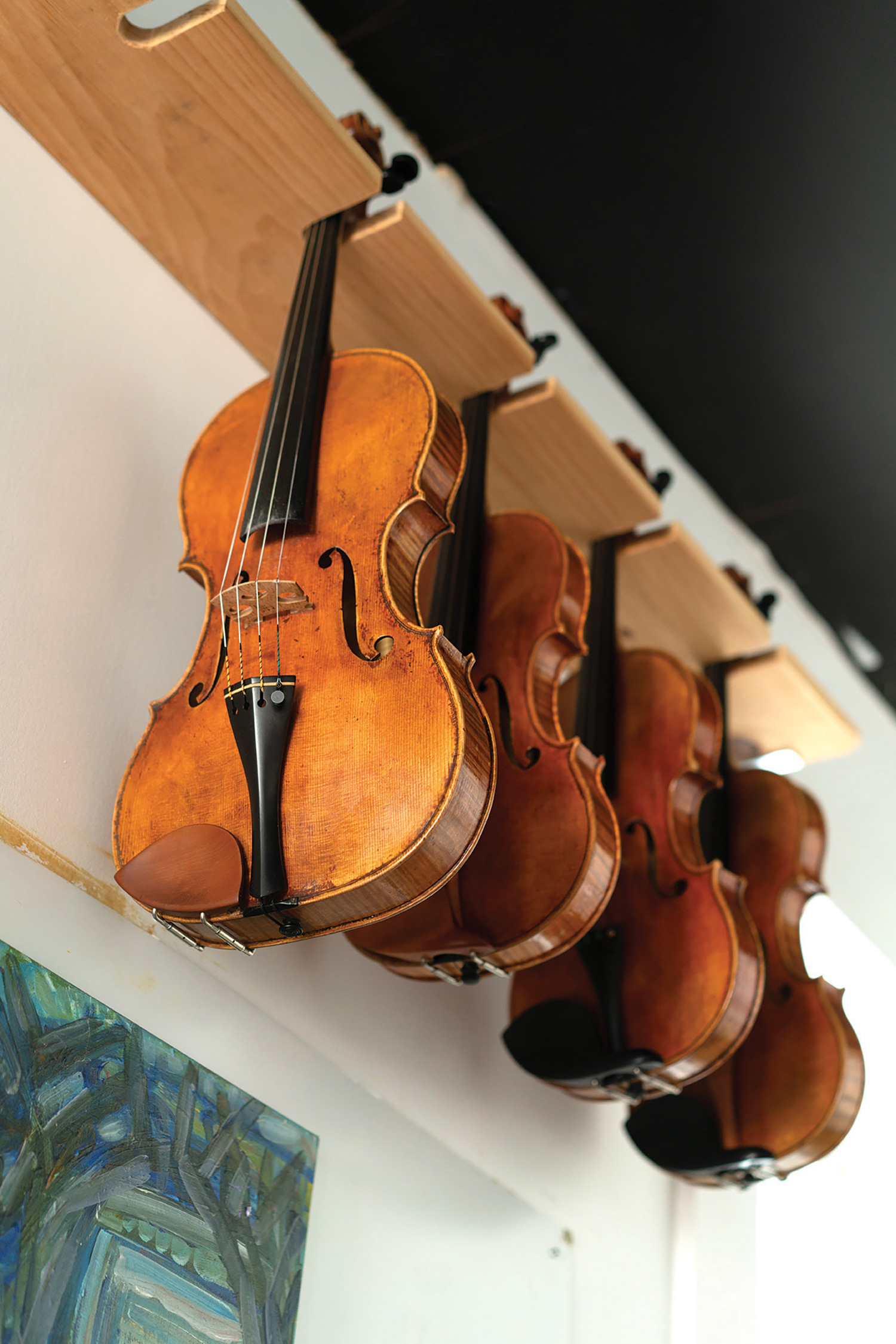
“You’re taking the wood and these varnishes—and guts, you know, these natural-occurring substances—and turning it into a sound.”
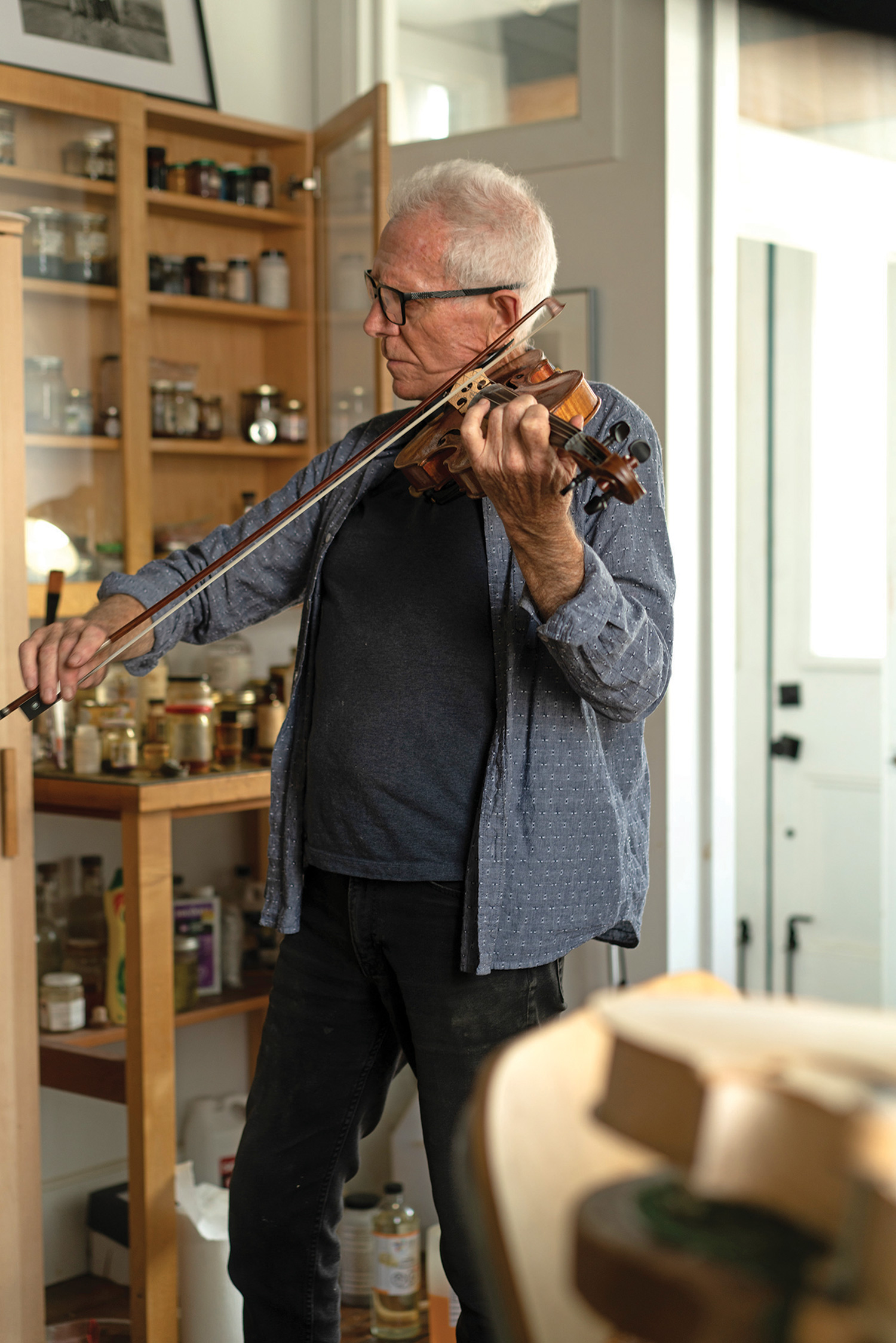
Prentice concurs, “You have to make the kind of sound that they, the player, can use to create the music that they want, whether it’s an orchestra player or soloist.”
What makes a great instrument? “It’s the character of sound,” says Prentice. “Its ability to carry in a large space, or the warmth. Some just love the warmth of the sound of a certain instrument. Some want volume and power so they can reach the back of a large hall over an orchestra.”
These nuances can be minute, affected by millimeters in curve, or the density of wood. Schnurr favours an alpine spruce from a specific forest known as the Paneveggio in Italy’s Dolomite Mountains, and maple from Bosnia.
“Different woods have different stiffness, you know,” suggests Prentice. “You can imagine a piece of poplar versus a piece of maple, there’s going to be a difference in deflection. So what happens with violins as you’re playing is they’re constantly changing and deflecting in different kinds of ways.”
Traditionally, the fingerboard of a violin would have been made from ebony.
Unfortunately, some ebony species are endangered, making it in many cases unsustainable and illegal for trade and export. “You can only harvest it in Cameroon, Africa, legally now, and actually two people in the world own rights with the Cameroon government to legally harvest ebony,” says Schnurr. “Historically it would be cut and only the black parts would be used, and they would leave the rest to die and rot in the forest.”
As a matter of necessity, other woods and synthetics are now being explored to great effect. Evolution of the instrument seems inevitable.
When asked about the future of the instrument and whether any changes in biodiversity or technology may affect it, Schnurr considers the possibility and says rather philosophically, “That nothing new can ever be done is a pretty stagnant and boring way to think, but at the same time, what do we want to change and why do we want to change it, and is it still going to be a violin in the end?”
He then paraphrases a quote by renowned American luthier Sam Zygmuntowicz, “The value of tradition lies in repurposing the meaningful parts.” Schnurr substitutes “useful” for “meaningful” and adds his own cadence to the quote saying, “I believe the violin is steeped in tradition and has a lot of useful parts.”
For now, both violin makers enjoy the slowness of a region steeped in its own unique beauty and history. “Every time I’m out on a trail here, I realize that of all the places I’ve been in the world and hiked and travelled, this is one of the most beautiful. I mean it really, truly is just so biologically diverse and has a great community, great people, lots of musicians.” Schnurr pauses, and then repeats, “Lots of musicians.”
Upon moving to the area, Prentice discovered a great-grandfather had been born in Durham and had lived and worked in the wood trade in Flesherton. “He had signed up for the First World War army, and he had been refused because it said in the old army records that he cut off his toe in Flesherton!” Prentice laughs. “So not only did we luck into the place, there was blood in the soil.”











